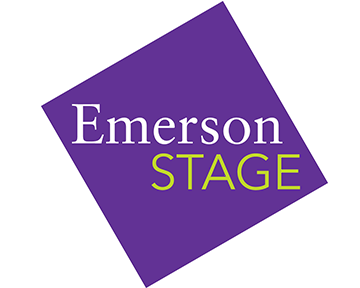The Virtual Leaps and Bounds of Corduroy, An Interview With Movement Director Nathaniel Justinano
By Chandler David, Production Dramaturg
Featuring Nathaniel Justiniano, Movement Director and Performing Arts Faculty
Chandler David:
Tell me a little bit about your experience with physical comedy and clowning.
Nathaniel Justinano:
Sure, I received training in physical theater, commedia, red nose clown, and bouffon at Dell’Arte International School of Physical Theatre between the years of 2005 and 2008. And proceeded to move to San Francisco in 2008. For 10 years there, I worked with a company I founded called Naked Empire Bouffon Company, which does grotesque physical, visually-driven, satire, full body mask, lots of shapes and grotesquerie to make social commentary and interrogate our political and social climate. Since then, I’ve also been teaching a bouffon intensive all over North America, which is a week or weekend long intensive for professionals, and also tour new shows that we devise with my company. I’ve also been movement director for the Sacramento Shakespeare Festival and for We Players, which is a San Francisco theatre company. And then I teach physical comedy and comedic performance here at Emerson.
Chandler David:
Have you ever had any experience with live virtual performance before working on this show?
Nathaniel Justinano:
Just last year, I worked with a New Hampshire company who had devised a show. One of the main characters has a really challenging conversation with the man that she has some past with. I called in from my office and I got beamed into the performance, which was live in New Hampshire. We had a full on argument on the phone nightly and then we get off the phone. And I don’t know how the rest of the show is going because I’m like, I’m not there. So that was super fun. Also this summer, I started devising a show with my company. It’s a one person show I’m directing and co-creating. We did several showings of our works in progress. Obviously for a virtual audience, and that audience was zooming in from a couple places in the country.
Chandler David:
Has this experience taught you anything that you didn’t get from those other previous experiences with virtual live theater?
Nathaniel Justinano:
Yes. It’s good to think of it like the nature of Photoshop, there’s layers to it. And then at one point, you compress them and it’s one object, and it moves on. I’m used to working in one layer, the physicality, on top of someone else’s layer, the scenic design, above that would be props, and someone else is putting a layer of lighting. And while we’re in the room, seeing the compression happen, you can focus on your layer. That is not how this process works. This is always compressed, and if you make one choice, it affects everybody else. As a director, you are simultaneously designing, and doing cinematography and all considerations are being rammed up against each other in ways that we’ve never experienced before. And it’s much more dense of an experience, moment to moment.
Chandler David:
What were some puzzles you’ve encountered during this rehearsal process?
Nathaniel Justinano:
This specific script is built off of the spectacle of object work and the performer. Climbing of objects, spinning around with objects, appearing with objects, and shenanigans ensue. We have both a constraint and an opportunity with Zoom. The fact that we no longer have multiple people, surrounding the performer to support them. Instead we support them at the beginning of the show, to be ready to do their entire experience. An example of one wonderful puzzle that is exciting is the integration of the aesthetic of the scenic design. That invites us to play with more of a cartoony approach to the physical comedy. We have the option of having a backdrop mixed in with an object that’s green screened, mixed in with a costume effect, all working together in ways that maybe would not have been possible if we were doing it live.
Chandler David:
In what ways do you think the use of vMix (our video streaming software) has assisted in telling the story through movement?
Nathaniel Justinano:
At the root of movement design is the same language that we use in how we’re looking at the screen for vMix. So I think I talked about movement dynamics, things like swooshes, and splats, and slides, and sudden things, surprises. Slow, liquidity from the bottom to the across the top, and so on. So those same dynamics that I would talk about live to the actor are applicable to us, and more. So things like scale, and the ability to make a performer larger or smaller without the performer having to do anything gives us an opportunity to, for example, climb a mountain, and climb a mountain in a way that’s really delightful and believable within the world that we’ve created. That we would not have been able to do in person. So that kind of idea has been great. This specific show leans into an element of the magical or the impossible. I think we are taking advantage of the magic that we can create with vMix to convey that.
Chandler David:
Do you have any final things you want to say about this process, this show, this team?
Nathaniel Justinano:
Just that I think it’s really beautifully designed and that the actors have been so game. And because of that they are making the magic real which is really beautiful to watch.
Experience Emerson Stage’s production of Corduroy October 31 or November 1 at 2 p.m. EST. More information and tickets are availabe at emersonstage.org/corduroy.
